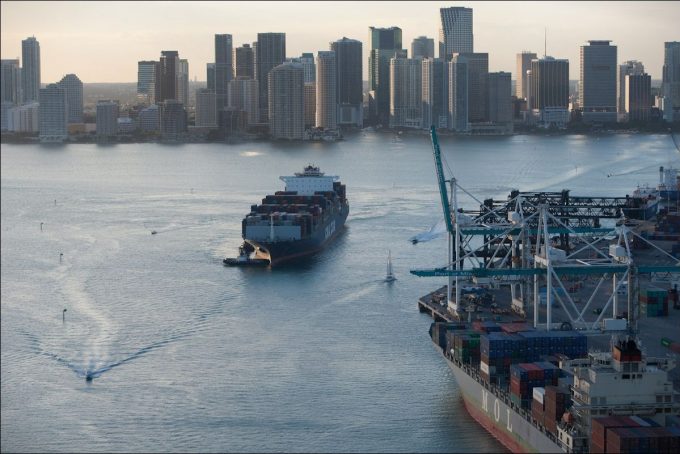It's all politics: Cosco-backed Peru port project at risk
China’s Peruvian dilemma

Last month’s decision by the US Federal Maritime Commission to authorise two terminal operators in the port of Miami to create a “conference agreement”, allowing them common pricing and operational practices, paves the way for others to form alliances that mirror their shipping line customers.
The FMC commissioners agreed not to prevent the Miami Marine Terminal Conference Agreement taking effect on 31 December/
It allows two of the port’s three container terminals – Port of Miami Terminal Operating Company (Pomtoc) and South Florida Container Terminal (SFCT) – to seek “cooperation and commonality in both business and operating matters”.
An FMC statement added: “…the companies may establish a variety of common rates, rules, and practices as well as to meet to discuss these matters.”
During a speech to the North Atlantic Ports Association in Virginia at the beginning of December, FMC commissioner William Doyle suggested the Miami operators’ filing could form a template for terminal alliances to construct framework service agreements with liner alliances.
And FMC chairman Mario Cordero argued that allowing terminal operators to cooperate ought to be to the benefit of shippers.
“These two facilities are located in very close proximity to one another and allowing the entities that operate them the ability to communicate on a number of topics creates an opportunity to achieve efficiencies that potentially can benefit both the port of Miami and the shipping public more broadly,” he said.
While discussion agreements among ocean carriers are commonly filed at the FMC, agreements between terminal operating companies have been less common to date, the organisation said.
“We are always interested in receiving well-crafted proposals that seek discussion agreement authority that is narrowly tailored to achieve efficiencies,” Mr Cordero added.
However, Neil Davidson, director of ports at Drewry Maritime Advisors, told The Loadstar that the agreement was also a response to the growing consolidation among shipping lines, and the FMC’s green light of the could pave the way for it to take place in other jurisdictions.
“I think this is a really significant trend,” he said.
“As to whether it could happen elsewhere in the world, I suppose each case would need to be considered by the relevant competition authorities. But you’d have to say that if the FMC is comfortable with the concept, then other regulators may well be too.”
Mr Davidson also agreed that container terminal alliances were likely to work best for adjacent facilities. The Pomtoc terminal is owned by the port authority, while SFCT is managed by APM Terminals.
He said: “As to whether it could work across ports, I think the value of such alliances diminishes with distance. Terminals will find it progressively harder, the further apart they are geographically I think.
“Having said this, if they are in the same market and are substitutes for each other as far as shipping lines are concerned, then alliances still make sense,” Mr Davidson added.
The more diverse the terminal ownership within a port, the greater benefits that terminal alliances could bring. The stand-out example is the Los Angeles-Long Beach port complex, which has 13 different terminals.
Mr Davidson said there were other contenders.
“I’ve done some research into which ports are most fragmented and besides LA-LB, good examples are Buenos Aires, Kobe, Osaka, Tokyo, Laem Chabang, Kaohsiung, Xiamen, Tianjin, Busan and Ningbo.
“Note though, that it’s not always the case that every terminal in each port has a different operator.”
Comment on this article